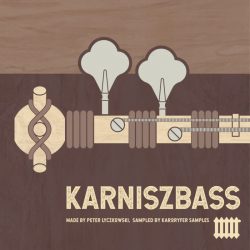Surfkiss uses the same guitar as the Snowkiss Guitar library, restrung and sampled again, this time with a focus on an even wider variety of unusual techniques.
In the end, the keyswitches take up more than two octaves.
Though strung with heavier flatwound strings similar to those used by surf musicians in the early 1960s and featuring a complete set of normal techniques for normal styles, it also goes into no wave noise and prepared guitar territory.
Please note: Requires the free Plogue Sforzando sampler, which works on 64-bit Windows and Mac systems, 4 GB RAM, and an SSD.
$19.00



Does anybody need guitar samples with a clothespin attached to the string above the one being plucked, so it bounces when a note is played, sampled with two velocity layers and four round robins?
Perhaps – it certainly is more convenient to switch between that and another keyswitch than it is to set this stuff up in real life.
Check out the walkthrough video above. “A Gallery Of Failure” demo uses both Surfkiss and “real world” hardware guitar, “Lullabye Of The Leaves” uses Surfkiss for the guitar parts.
You must be logged in to post a review.

Reviews
There are no reviews yet.